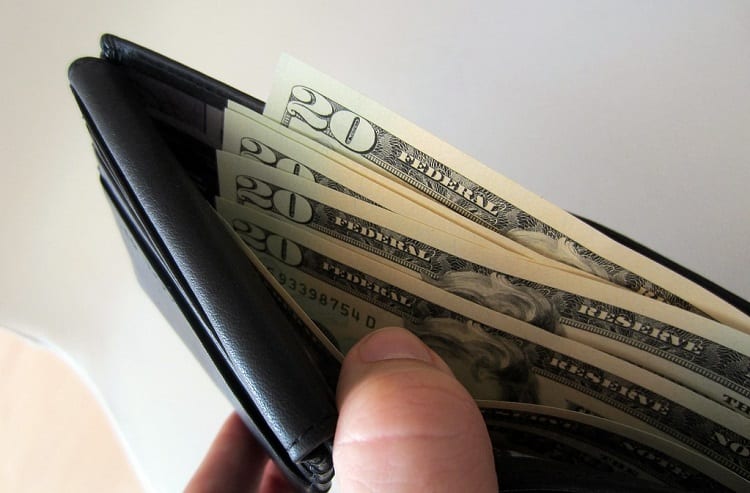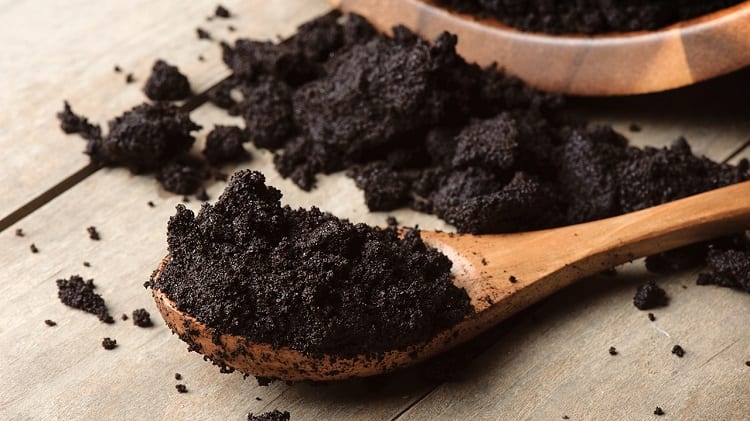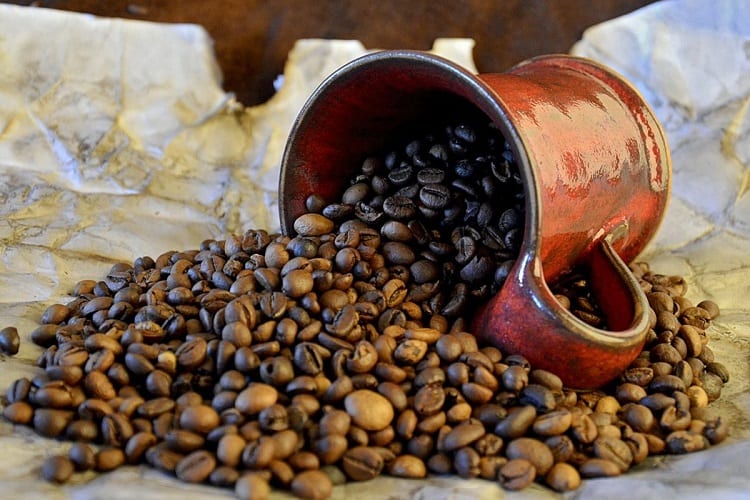Well, can you reuse coffee grounds?
Sure, you can, but it’s not really the best option if you’re crazy about coffee. You found this article, which leads me to believe you deeply care about your coffee and how it tastes.
Let’s discuss what’s going to happen when you reuse grounds and see if it’s something that’s worth doing for its budget effectiveness or just not worth sacrificing the flavor for.
Can You Reuse Coffee Grounds?
You can reuse grinds, and this is how you are going to do it.
Your grinds are going to come out of the brew basket completely wet, but you don’t want to just leave those lying around to build up mildew and bacterial growth.
While coffee is very acidic and it’s not likely that bacteria will grow on it in a short amount of time, it’s still a process that begins once the grinds exit the temperature-safe zone of about 140°F.
To continue, you have to dry out those grinds. First thing first: lay them out on a pan and put them in the oven for about fifteen minutes at 275° F.
This starts getting most of the excess moisture out; just don’t layer the pan too high. You want about half an inch worth of depth.
The thing is, you don’t want to over-roast the grounds for too long. Eventually, they’ll just end up tasting burnt. Take them out of the oven at this point and prepare to transfer them to a pan that’s lined with tin foil.
That pan is going to sit out in the sunlight for about two to three days.
If you’re going to do this on a routine basis, you should have a spot where you can put up to four pans at a time (since you don’t want wet grounds sitting around until you can build up a big batch).
Slap a timestamp on each of them so you know how long they’ve been there. Another thing to consider is having the upcoming weather forecast handy.
You might not be able to reuse all of the grounds due to inclement weather, but reusing about 70% of your grounds isn’t uncommon.
If you’re wondering how it’s going to work out in your favor, we’ve listed the benefits of reusing coffee grounds below.
Benefits Of Reusing Coffee Grounds

While it’s not everyone’s preferred method of saving on coffee, reusing your grounds has a few major benefits for your wallet and the environment as well.
Saving Money
Everyone likes saving money. If you buy a 16-ounce bag of coffee beans, and let’s say that’s about $8.99 for a medium-quality roast, then you can double down on the money you’ve spent.
You grind them up, use them, and let’s say that you’re using about 1 oz per cup in a single-cup machine.
That’s sixteen cups of coffee at about $0.57 each, but if you’re able to salvage enough for another 12 cups (you can’t save all the grinds), you’d only be spending about $0.33 per cup.
That could equal roughly a hundred dollars a year in savings, depending on how much coffee you drink.
Environmentally Conscious
Coffee grounds can either help the soil in ways that we almost can’t imagine or add methane gas to the atmosphere if we let them rot in landfills.
When it gets mixed in with other kitchen food scrap waste, it ends up being a blight on the earth.
If you just spread wet coffee grounds across your lawn, or more specifically, use them for gardening, they’re aerated enough to actually provide nutritional benefits to the soil.
Try New Flavors
Once you’re familiar enough with the taste of reused coffee grounds, you should be able to start toying with how they taste.
You’ll see in our drawbacks that reused grounds, as you might expect, lack the flavor of freshly ground coffee.
That’s okay; you can spice it up by adding flavor components to your brewed coffee.
Or, you can actually spice it up by adding spices to the reused grinds to bring some of that coffee zing back to life.
Try cinnamon, nutmeg, and even pumpkin pie spice if you’re feeling a bit adventurous. It makes a world of difference without wasting a full cup of freshly ground coffee.
Drawbacks Of Reusing Coffee Grounds

There are some good reasons to reuse coffee grounds, but if you’re like us, sometimes these drawbacks are just a bit too much to trade off in exchange for the economic boost.
Less Flavor
It’s an undeniable fact, and the very thing you expected to see when you came here: there’s just a lot less flavor in reused coffee grounds.
While that might not come as a shock, the flavor will diminish in accordance with your brewing method. If you’re making strong coffee in a percolator, the grinds are going to have almost no flavor left.
If you use a French press, your grinds are bigger, so they might actually have some more life to them.
For the most common type of brewing method, being a drip coffee maker, the results rest somewhere in the middle.
You get a mix between the flavor being sapped out and the grinds being big enough to still have just a little bit more life in them.
Easy To Mess Up
If you don’t do this properly, your grounds are going to gather mildew and mold. It’s not good. You can’t just scoop out that one part that’s starting to grow green fuzz.
Since coffee grounds are acidic, they’re harder for bacteria to start growing on.
That means that it’s severe, and the other grounds are likely a day or two away from completely molding as well.
Time-Consuming
It’s not exactly a simple task to constantly rotate your coffee out while trying to dry it. Carving out that time and doing it properly is something you have to commit to.
Sure, you can save some money every year, but in your busy life, is it really the best way to be spending your time?
We don’t particularly advocate for or against reusing your coffee grinds, but it’s important to note how long it can take, especially at the beginning.
Bye-Bye To Caffeine
Caffeine is water-soluble, meaning once water is introduced to the grounds and runs through them, the caffeine comes rushing out.
That’s good for your first cup or pot of coffee, but you’re just going to be drinking coffee-flavored water after the fact.
The health benefits are microscopic in comparison to what they were before, and you won’t get a jolt or a buzz off of your coffee the same way that you’re used to.
If you immediately rebrew your coffee in the coffeemaker, you might still get a hint of caffeine in that second pot.
What Type Of Coffee Is Best For Reusing?

For starters, you need to make sure it’s freshly ground.
If you’re reusing pre-ground coffee, you’ll be left with a bitter flavor in your cup.
If you’re grinding it yourself every morning, you can most certainly reuse your grounds with little to no problem.
But what type of coffee beans should you use?
You can use arabica, robusta, or even Liberian coffee beans if you want—there’s no major difference between reusing these.
That being said, you should aim to reuse light roast or medium roast coffee grounds only and avoid dark roast altogether.
During the roasting process, oils and CO2 are extracted from each coffee bean (commonly referred to as the first and second “crack,” which indicates the cracking sound it makes during roasting).
When this happens, there are fewer oils and hydration in each bean. That’s good for storage, but it’s not good for reusing them.
The beans are cooked at higher temperatures for longer. There is more flavor, to some, but it’s quickly diminished after the grounds are used one time.
Since light roast and medium roast beans are roasted for less time, there’s arguably more coffee flavor and actual oils/co2 in each bean. That’s going to contribute to flavor.
Being Economic About Your Coffee
If you’re eccentric about your coffee flavor, then we don’t recommend reusing your grounds.
It’s just not going to create the same flavor profiles, and it will certainly give you inconsistency in your daily coffee regimen.
Every other cup of coffee you have will be watered down or lacking in flavor.
However, if you want to be economical about your coffee grounds, you can simply use a little less at a time when you make your coffee in the morning.
If you usually use five teaspoons in your drip brewer, use four, or four-and-a-half, then put the additional amount of coffee grounds in a separate container.
Somewhere between five and ten times of doing this, you’ll have enough for another pot.